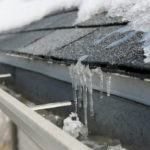
How To Tarp A Damaged Roof
Protecting your property from damage is always a top priority as a homeowner or property owner. One of the most vulnerable spots of any building is the roof, which is constantly exposed to harsh weather conditions and can be damaged by a storm or other natural disaster. That’s why it’s crucial to have a good plan for protecting your roof in the event of damage. One of the best ways to do this is through roof tarping. In this article, I will explain what roof tarping is, when it’s necessary, the benefits of using a roof tarp, how to install a roof tarp, the types of roof tarps available, the best practices for roof tarping, and when to remove the roof tarp.
Introduction to Roof Tarping
Roof tarping covers a damaged roof with a tarp to prevent further damage. This is usually done after a storm or other natural disaster that has caused damage to the roof, such as high winds or fallen trees. Roof tarping is a temporary solution that can protect permanent repairs can be made.
When is Roof Tarping Necessary?
Roof tarping is necessary whenever a roof has been damaged and needs to be protected from further damage. This can result from various causes, including storms, fallen trees, high winds, or even fire damage. When the roof is damaged, it can expose the interior of the building to the elements, which can cause further damage, including water damage, mold, and structural damage. Roof tarping can prevent these problems by providing a temporary barrier between the interior of the building and the elements.
Benefits of Using a Roof Tarp

There are a few important benefits to using a roof tarp to protect your property. The biggest advantage is that it will prevent further damage from occurring. When a roof is damaged, water and debris can enter the building, causing additional damage to the interior. Covering the damaged roof with a tarp can prevent this from happening and protect your property until it can be fixed.
Another benefit of using a roof tarp is that it can be installed easily and quickly. This is very important in an emergency when time is of the essence. Roof tarping can be done promptly and efficiently, which can help to minimize wind and water damage to your property.
Finally, using a roof tarp can be more cost-effective than other types of repairs. While permanent maintenance may be necessary in the long run, using a roof tarp can provide temporary protection at a lower cost, allowing you to save money while still protecting your property.
How to Install a Roof Tarp
Installing a roof tarp is a straightforward process that can be accomplished with a few basic tools. Here’s how to do it:
1. Start by measuring the damaged roof area to determine your desired tarp size.
2. Cut the tarp to size using a utility knife or scissors.
3. Position the tarp over the damaged area, ensuring it extends at least 2ft beyond the damaged area on all sides.
4. Secure the tarp in place using roofing screws or nails. Be sure to place the screws or nails at least six inches apart around the perimeter of the tarp.
5. Finally, use roofing cement to seal gaps or holes around the tarp’s edge.
Types of Roof Tarps

Several types of roof tarps are available, each with advantages and disadvantages. Here are some of the most used types:
Blue Poly Tarps
Blue poly tarps are the most common type of roof tarp. They are lightweight and easy to use. They can be purchased in various sizes. They are not as strong as other tarps and can tear easily in high winds.
Canvas Tarps
Canvas tarps are more durable than blue poly tarps and can be used for extended periods. They are also more tearing-resistant and can provide better protection in high winds. They will be heavier, thicker, and more challenging to handle than blue poly tarps.
Heavy-Duty Tarps
Heavy-duty tarps are the most durable type of roof tarp, and they are designed to hold up to high winds and can be used for a more extended period. However, they are also the thickest and most challenging to handle and may require additional support to prevent tearing.
Materials Needed for Roof Tarping
To install a roof tarp, you will need the following materials:
Tarp (blue poly, canvas, or heavy-duty)
Roofing nails or screws
Utility knife or scissors
Roofing cement
Roof Tarping Best Practices
When tarping a roof, following certain best practices is important to ensure the tarp is installed correctly and provides adequate protection. Here are some tarping tips to keep in mind:
Always use the appropriate size tarp for the damaged area.
Ensure the tarp extends at least two feet beyond the damaged area on all sides.
Use roofing nails or screws to secure the tarp in place.
Place the nails or screws at least six inches apart around the perimeter of the tarp.
Use roofing cement to seal any gaps or holes around the perimeter of the tarp.
Check the tarp regularly to ensure it is still secure and in good condition.
When to Remove the Roof Tarp
A roof tarp should be removed as soon as possible once permanent repairs have been made. Leaving the tarp in place for too long can cause it to deteriorate and create additional problems, such as mold and mildew growth. Once the permanent repairs have been made, the tarp should be removed carefully to avoid causing any further damage to the roof.
Hiring a Professional for Roof Tarping
While homeowners can do roof tarping, hiring a professional to handle the job is often best. A local professional roofer will have the experience and expertise to install the tarp correctly and ensure adequate protection. They will also have the correct equipment and materials to complete the job safely and efficiently.
Conclusion
Roof tarping is a very effective way to protect your home or business from further damage in the event of a roof leak or other damage. By following the practices outlined in this guide, you can ensure that your roof tarp provides adequate protection until permanent repairs can be made. Whether you install the tarp yourself or hire a professional, protecting your property can save you time and money in the long run.



